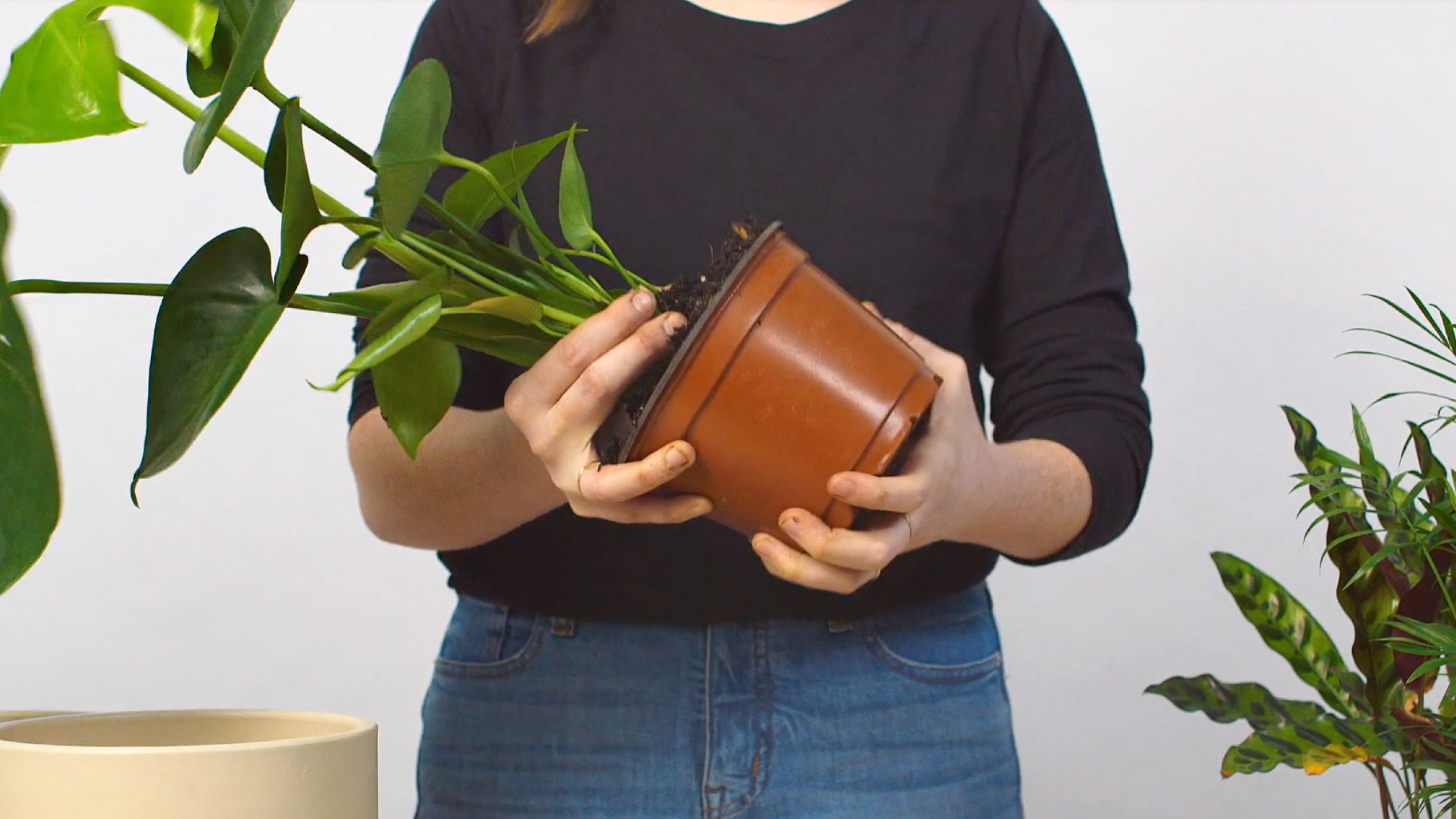
Eventually, your plant will need to be repotted. You may want to transfer your plant from its original grow pot into a studier, more appealing pot. Additionally, the plant may outgrow its pot, and the roots become crowded with nowhere to go. This makes the plant rootbound, and the roots prevent the soil from absorbing water. This section will cover other reasons for repotting and how to repot.
There are typically indicators that your plant is read to be moved into a bigger planter.
:max_bytes(150000):strip_icc()/how-to-tell-if-your-plant-is-rootbound-847788-hero-ea3340c2f2a549d2aec38d676ebde563.jpg)
Rootbound plant
Roots growing out of drainage holes

Salt build up
A good rule of thumb is to repot once a year. The beginning of the growing season, March-April, is the optimal time to repot. This is because some root damage inevitably occurs, so repotting a plant during its growth period encourages repair and new growth. However, this doesn't mean you can't repot in winter, especially if your plant is struggling.
Planters are categorized based on the diameter of the opening and are sized in two-inch increments. It's recommended to choose one pot size up when repotting plants. For example, if you have a 4 inch pot, go up to a 6 inch pot. It's helpful to measure your current pot before buying a new one. Your goal is to stick to a pot that is a few inches wider than the rootball. Moving a plant to a much larger pot can cause problems. If a plant has too much soil around its rootball, it can cause the roots to rot because they can’t use all the water available to them.

Moving into a pot one size up
Additionally, if a plant is healthy and you don't want it to get bigger, you don't have to move it to a larger pot. Instead, just refresh the potting mix by getting rid of the old soil and putting the plant back in the same pot with new soil.
First, you'll want to remove your plant from the pot. How this happens depends on the plant and what container it's in. If it's a pliable pot, gently squeeze it to loosen the rootball. If it's a rigid pot, dump out some of the soil on top, tilt the pot, and slide the plant out. If it doesn't come out, you can gently wiggle or pull on the plant. You can also get a knife and run it around the container wall to loosen up dirt and roots. The last resort is to cut or break the pot.

Removing plant
Once the rootball is removed, tease the roots apart with your fingers, especially if the rootball is entangled or densely packed. The goal is to have a mass of roots that can spread out and grow. The roots should be a nice light, white-ish color and firm. If you notice any brown or mushy roots, cut them off.

Teasing apart rootball
Add soil to the new pot and test the height of the plant in the pot. You may need to add soil or take some out. You want the soil to go up to the base/stem of the plant so that all roots are covered. The soil level should end a few inches below the top of the pot. This ensures soil and water don't overflow when watering.

Good soil height
Gently wiggle the pot to allow soil to get into crevices, and gently press it down. You don't want the soil to be too loose or super compact. Water the plant immediately after repotting.
Water after repotting
This method works well for smaller, more manageable plants. Large plants can become almost impossible to repot. In this case, you can enlist someone to help you repot, or do your best to swap out most of the soil in its current pot with fresh soil.